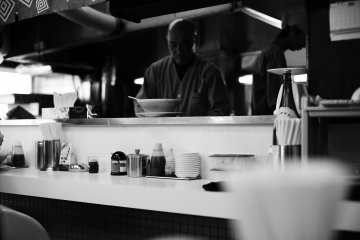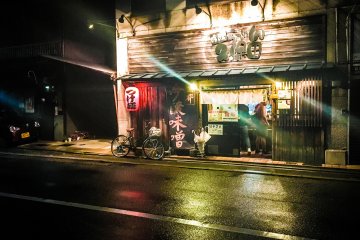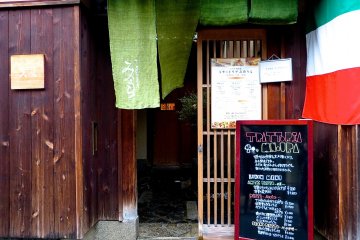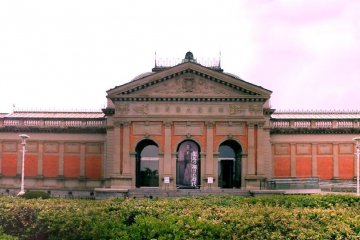
교토 나무 그늘에서 휴식하는 도후쿠지(東福寺)
Tomoko Kamishima토후쿠지사 안쪽의 그린밸리: 나무다리와 부드러운 돌계단을 걸어 올라가면 깊은 숲 속에 떠 있는 듯한 느낌이 든다.

Tofukuji temple (東福寺), particularly known for its autumn leaves, was founded in 1236 and is the head temple of the Tofukuji School of the Rinzai sect of Zen Buddhism.
Jorakuan Guest Hall (Fumon-in) and Tojiryo (Shoin), next to Kaisando Hall, are undergoing preservation/repair work until October 2025.

토후쿠지사 안쪽의 그린밸리: 나무다리와 부드러운 돌계단을 걸어 올라가면 깊은 숲 속에 떠 있는 듯한 느낌이 든다.


교토의 도후쿠지, 그 웅장한 스케일과 미는 일본에 현존하는 어떤 절도 압도한다. 예를 들어 국보 지정의 아름다운 삼문, 이 종류의 문 중에서 일본최고이지만 사진을 찍으려면 한참 멀리 떨어지지 않으면 렌즈에 전체상을 담을 수 가 없다. 그만큼 거대한 것이다. 그러나 동시에 섬세하고 아름답다. 이 절은 임제종 도후쿠지파의 대본산으로 그 오랜 역사는 1236년으로 거슬러 올라간다. 이 절을 찾는다면 1939년에 비교적 새로운 시기에 정원이 조성된 호조 정원도 살펴보자.

다이이치 아사히 라멘 (일본어 링크: http://www.honke-daiichiasahi.com/)은 교토역 근처에 있는 교토 스타일 라멘집이다. 이 식당은 평소보다 진한 쇼유 (소야)를 기반으로 한 국물로 잘 알려져 있다. 맛집이기 때문에 줄을 설 준비를 하셔야 할꺼다. 가격은 꽤 저렴하고, 이 집의 시그니쳐 라멘은 800엔 이다. 타카쿠라도리와 시오코지도리를 교차로 근처 교토역 북쪽으로 걸어오시면 5분 정도밖에 안 걸리고. 영업은 오전 5시부터 오전 2시까지 한다.

교토 시모교코에서 '긴조 라멘 쿠보타'에 대한 호평 리뷰를 읽은 후, 나는 이 정통적인 로컬 미소 전문 라멘 가게에 들러봐야겠다고 결심했다.

트라토리아 미노우라는 고다이지와 야사카 진자사당 근처에 있는 작은 식당이다. 평일 점심 세트(1500엔)는 합리적이고 맛도 좋았다. 그것은 작은 샐러드와 빵을 곁들인 주요 파스타 요리를 포함한다. 술과 후식은 별도이다.

Fushimi Inari, officially known as Fushimi Inari Taisha, is a beautiful Shinto shrine in southern Kyoto, famous for its thousands of vermilion torii. The torii gates along the way are donations from individuals and companies and on the back of each gate is the name of the donor and the date of the donation. The trails lead into the wooded forest of the sacred mountain Inari, which is 233 meters high and is part of the shrine grounds. The hike to the top of the mountain and the way back take about 2-3 hours. The shrine is dedicated to Inari, the Shinto god of rice. Since it is believed that foxes are Inari's messengers, there are numerous fox statues throughout the shrine grounds. The Fushimi Inari Shrine is the main shrine of all 30,000 Inari shrines in Japan.

Sanjusangendo, officially called Rengeō-in, is a Buddhist temple of the Tendai sect located in the Higashiyama district of Kyoto. The temple’s main hall is famous for housing 1,001 statues of Senju Kannon (1,000-armed Kannon), the goddess of mercy. Taira no Kiyamori built the temple in 1164 as a retirement palace for Emperor Go-Shirakawa. Years later, the structure burned down but was reconstructed in 1266. The name Sanjusangendo translates to “a hall with 33 spaces between columns'' and refers to the number of intervals between the temple’s support columns. The focal point of the temple is its main hall. The impressive one-story building measures 120 meters long, making it the longest wooden structure in Japan. The main hall’s humble architectural style is characterized by its woodwork and slanted roof of wooden shingles. Despite its lack of outward ornateness, the hall’s sheer size commands respect from visitors and exudes a ubiquitous air of sacredness. Apart from the main hall, the grounds are also home to tranquil gardens, temple structures painted in brilliant vermillion, and an annual archery festival called Toshiya Matsuri, where thousands of participants come to test their bow skills and endurance. Witness the 1,001 Senju Kannon Statues Inside the main hall, walk among hundreds of golden, human-sized statues of Senju Kannon. The ornately carved statues stand in elegance with two of their 1,000 arms positioned in prayer and their serene faces deep in meditation. Atop their heads sprout additional smaller heads, which, along with goddess’ 1,000 arms, help her better fight human suffering. In the center of the hall sits a large statue of Kannon, who is positioned similarly in prayer with her multitude of arms fanned out behind her. The 12th and 13th-century statues are carved from Japanese cypress and lacquered with gold leaf, and the large Kannon statue, in particular, is considered a National Treasure. The 1,000 smaller statues are situated on both sides of the seated goddess in ten rows of 50. In front of the first row of Kannon statues, stand 28 additional sculptures of Buddhist guardian deities, many of whom, in contrast to the meditative statues, are poised in protective stances. The visual of hundreds of golden statues against the wooden hall’s muted walls is a truly awe-inspiring sight. Visitors cannot help but be comforted by the overwhelming sight of the serene goddess of mercy. Admission to Sanjusangendo costs 600 JPY for adults, 400 JPY for junior/senior high school students, and 300 JPY for children.

The Kyoto National Museum is one of the major art museums in Japan. Located in Kyoto's Higashiyama ward, the museum focuses on pre-modern Japanese and Asian art. [Wikipedia]